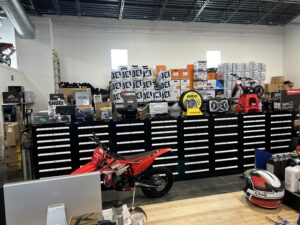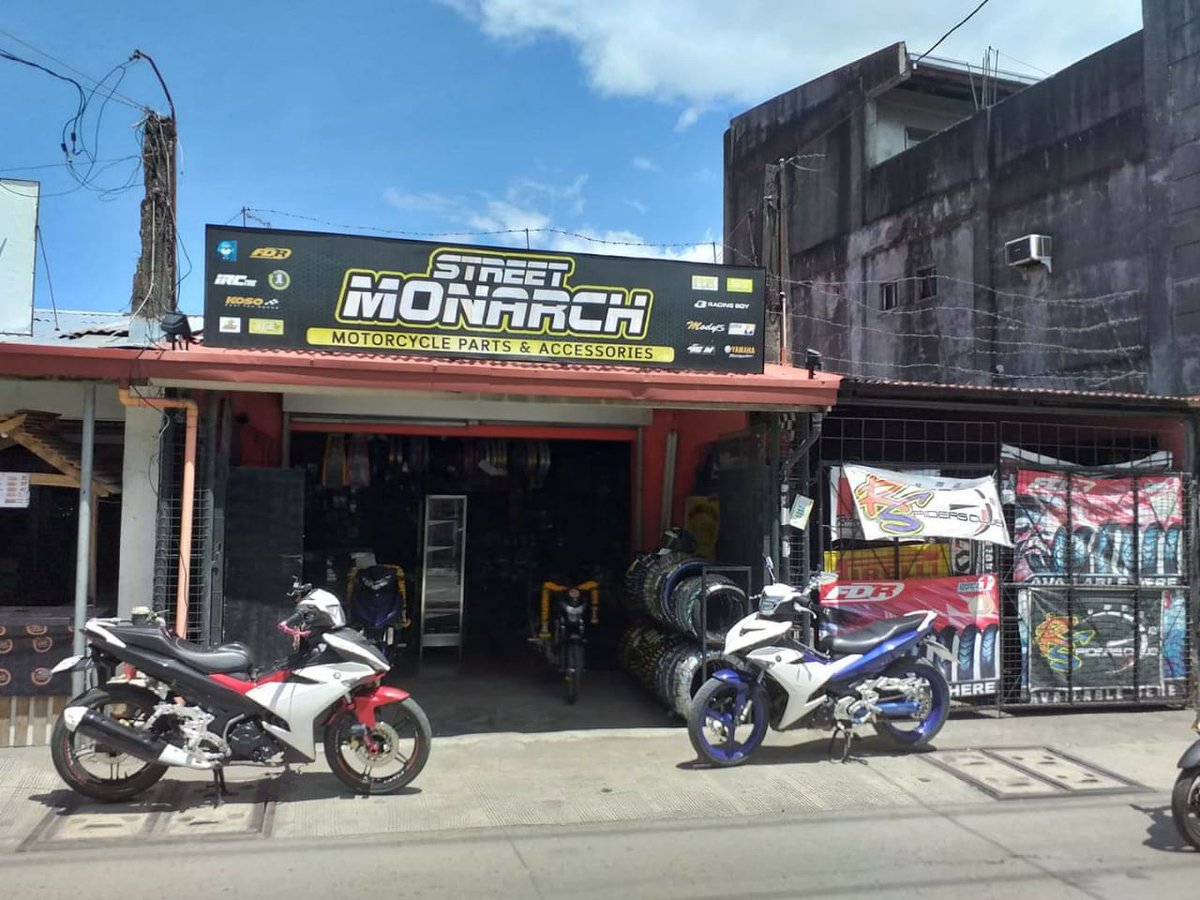Discover Affordable Costs on Motocross Parts NZ for each Bike
Discover Affordable Costs on Motocross Parts NZ for each Bike
Blog Article
Recognizing the Crucial Parts of a Motorbike: A Comprehensive Guide for Enthusiasts
For motorbike enthusiasts looking to boost their riding experience and ensure their bikes run efficiently, recognizing the necessary components of a motorbike is extremely important. Each component, from the engine's elaborate workings to the critical duty of the stopping devices, not only impacts efficiency but also security and convenience. This overview will certainly go through the essential parts that every motorcyclist need to know with, allowing educated options in both maintenance and possible upgrades. As we start this exploration, one must ask: exactly how does each component interact to develop the smooth adventure every enthusiast looks for?
Engine Parts

The camshaft plays an essential duty in regulating the timing of the engine's valves, making certain the accurate opening and closing required for reliable gas and air consumption, as well as exhaust expulsion. This timing is vital to preserving optimal engine efficiency and efficiency. Furthermore, the carburetor or fuel injection system, depending on the motorcycle version, is accountable for mixing air with fuel in the appropriate proportion for burning.
The air conditioning system, either air or liquid-based, functions to preserve the engine's temperature level within functional restrictions, stopping overheating and guaranteeing longevity - motocross gear. Each element, carefully developed and incorporated, adds to the seamless procedure of the engine, defining the motorbike's power result and total efficiency
Transmission System
Essential to the motorcycle's capability, the transmission system makes sure efficient power transfer from the engine to the wheels. This system consists of numerous critical parts, including the clutch, gearbox, and last drive, each playing a crucial function in translating the engine's power right into movement. The clutch, normally operated by a hand lever, serves to disengage the engine and involve from the transmission, enabling smooth equipment adjustments and controlled velocity.
The transmission, frequently referred to as the transmission proper, has a collection of gears that riders can by hand change with to adjust the bike's speed and torque output. These gears are arranged in a series that enables the bike to speed up smoothly and preserve optimum engine efficiency throughout numerous speeds. A lot of motorcycles utilize a sequential gearbox, calling for the biker to move gears in a fixed order.
Braking Devices
While comprehending the transmission system is crucial to harnessing a motorcycle's power, just as important is the capacity to regulate and stop that power successfully, which is where braking systems enter play. Brakes are vital for safety and performance, offering the motorcyclist with the essential control to browse numerous surfaces and problems. Normally, motorbikes include two kinds of stopping systems: disc brakes and drum brakes.
Disc brakes are extra widespread in contemporary motorcycles as a result of their superior performance. They are composed of a brake disc, caliper, and pads. When turned on, the caliper presses the brake pads against the spinning disc, transforming kinetic power right into warmth, consequently reducing the wheel. This system offers far better warmth dissipation, regular performance, and boosted quiting power, especially in wet problems.
Conversely, drum brakes, though much less typical, are still located in some motorcycles. They work by pushing brake shoes against the inner surface area of a drum affixed to the wheel. While typically less effective in warm dissipation and quiting power, drum brakes are less complex and a lot more affordable.
Recognizing these stopping systems' subtleties permits motorcyclists to keep their motorcycles properly and value the engineering that ensures efficient and risk-free stopping.
Suspension and Steering
Suspension and guiding systems are essential parts that significantly influence a motorcycle's handling and trip convenience. The shock absorber, including forks at the front and shock absorbers at the back, absorbs roadway irregularities, enhancing security and control. Front forks, typically telescopic or inverted, compress and rebound to reduce effects, while back shock absorbers preserve tire call with the road, important for grip and security.
Steering, focused around the handlebars, connects the motorcyclist to the motorcycle's directional control. The steering head bearings ensure smooth operation, permitting precise maneuverability. Appropriate placement and maintenance of these bearings are crucial for predictable steering feedback and reducing cyclist fatigue.
The suspension's adjustability is an additional essential aspect; preload, damping, and rebound settings enable personalization to suit various riding styles and problems. This discover here flexibility is vital more for optimizing efficiency, whether navigating metropolitan roads or dealing with rugged trails. Developments like digital shock absorber supply real-time modifications, enhancing experience top quality throughout varied surfaces.

Electrical Solutions
After guaranteeing a regulated and smooth adventure via effective suspension and guiding systems, interest transforms to the electrical systems, an essential aspect of modern motorcycles. These systems play a crucial role not just in starting the engine yet also in powering various components that enhance the performance and safety of the motorbike.
At the heart of a motorbike's electric system is the battery, which stores electrical energy required for beginning the engine and powering complementary systems - mx gear nz. The generator or generator, coupled with the rectifier-regulator, guarantees the battery remains charged while the motorcycle is in operation, transforming power right into electric energy and maintaining voltage degrees
The ignition system, another important element, is in charge of firing up the air-fuel combination in the engine's cylinders. Modern motorcycles usually utilize an electronic ignition system, providing greater effectiveness and dependability compared to conventional systems.
Lighting systems, consisting of headlights, tail lights, and signs, are additionally essential, making certain exposure and safety for the cyclist. Extra electronic parts such as sensors, control devices, and presents add to advanced functions like fuel injection administration, anti-lock stopping systems (ABDOMINAL), and electronic dashboards, further improving the riding experience.
Verdict
A thorough comprehension of a bike's necessary components, including the engine, transmission system, stopping mechanisms, suspension, steering, and electrical systems, is indispensable for fanatics intending to maximize safety, comfort, and efficiency. Proficiency of these aspects permits notified decisions regarding upkeep and upgrades, inevitably enhancing the riding experience. By incorporating this expertise, cyclists can ensure their bikes run at peak effectiveness and reliability, consequently making the most of both pleasure and longevity of their automobiles.
For bike fanatics looking to elevate their riding experience and guarantee their bikes run smoothly, recognizing the essential elements of a motorbike is paramount.Indispensable to the motorbike's functionality, the transmission system makes sure reliable power transfer from the engine to the wheels.While recognizing the transmission system is crucial recommended you read to harnessing a motorcycle's power, just as vital is the capacity to regulate and stop that power properly, which is where braking devices come right into play. Normally, motorbikes feature two types of stopping systems: disc brakes and drum brakes.
A detailed comprehension of a motorcycle's necessary components, consisting of the engine, transmission system, stopping mechanisms, suspension, guiding, and electrical systems, is essential for lovers intending to enhance efficiency, safety, and convenience.
Report this page